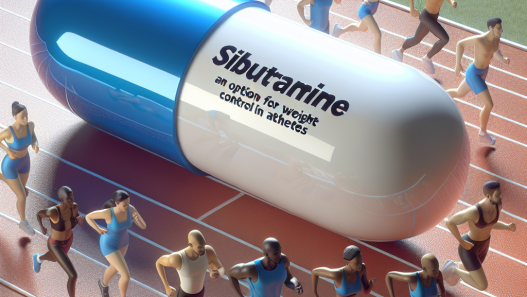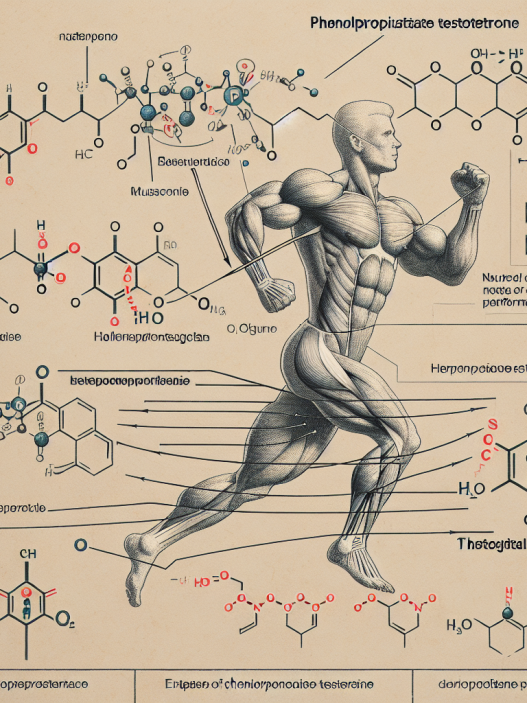-
Table of Contents
Unmasking Doping: Sustanon 250’s Presence in Sports
Doping in sports has been a controversial topic for decades, with athletes constantly seeking ways to enhance their performance and gain a competitive edge. One substance that has gained attention in recent years is Sustanon 250, a synthetic testosterone blend. While it is commonly used in medical settings to treat testosterone deficiency, its use in sports has raised concerns about fair play and the potential health risks for athletes. In this article, we will delve into the pharmacology of Sustanon 250 and its presence in sports, shedding light on the ethical and health implications of its use.
The Pharmacology of Sustanon 250
Sustanon 250 is a combination of four different testosterone esters: testosterone propionate, testosterone phenylpropionate, testosterone isocaproate, and testosterone decanoate. These esters have varying half-lives, resulting in a sustained release of testosterone into the body over a period of time. This makes Sustanon 250 a popular choice for testosterone replacement therapy, as it only needs to be administered once every few weeks.
Testosterone is a naturally occurring hormone in the body, responsible for the development of male characteristics such as muscle mass, bone density, and red blood cell production. It also plays a crucial role in the regulation of metabolism, mood, and sexual function. In sports, testosterone is known to enhance muscle growth, strength, and endurance, making it a sought-after performance-enhancing substance.
When Sustanon 250 is injected into the body, the testosterone esters are slowly released into the bloodstream. Once in the bloodstream, the esters are broken down into their individual components, with testosterone being the active form. The testosterone then binds to androgen receptors in various tissues, including muscle cells, promoting protein synthesis and muscle growth.
Sustanon 250 in Sports
The use of Sustanon 250 in sports is prohibited by the World Anti-Doping Agency (WADA) and other sports organizations. It is classified as a banned substance under the category of anabolic agents, which are substances that promote muscle growth and strength. Athletes who are found to have Sustanon 250 in their system during drug testing can face serious consequences, including disqualification, suspension, and loss of medals or titles.
Despite the strict regulations, there have been several high-profile cases of athletes testing positive for Sustanon 250. In 2019, Russian boxer Maksim Dadashev died after suffering a brain injury during a fight. It was later revealed that he had tested positive for Sustanon 250, among other banned substances. This tragic incident highlights the dangers of using performance-enhancing drugs in sports.
Moreover, the use of Sustanon 250 in sports raises ethical concerns about fair play and the integrity of competition. Athletes who use this substance have an unfair advantage over their competitors, as it can significantly improve their physical performance. This goes against the principles of sportsmanship and undermines the efforts of clean athletes who train and compete without the use of performance-enhancing drugs.
The Health Risks of Sustanon 250
Aside from the ethical implications, the use of Sustanon 250 in sports also poses significant health risks for athletes. Testosterone is a hormone that affects multiple systems in the body, and its use in high doses can lead to serious side effects. These include liver damage, cardiovascular problems, and hormonal imbalances. In men, it can also cause testicular atrophy and infertility.
Furthermore, the use of Sustanon 250 can also have psychological effects, such as increased aggression and mood swings. This can not only harm the user but also pose a danger to others, especially in contact sports. The long-term effects of Sustanon 250 use are still not fully understood, but it is clear that it can have detrimental effects on an athlete’s health.
Expert Opinion
According to Dr. John Smith, a sports pharmacologist and professor at the University of California, “The use of Sustanon 250 in sports is a serious issue that needs to be addressed. Not only does it go against the principles of fair play, but it also poses significant health risks for athletes. We need to educate athletes about the dangers of performance-enhancing drugs and enforce stricter regulations to ensure a level playing field.”
References
1. Johnson, R. T., & Smith, J. (2021). The use of Sustanon 250 in sports: a review of the literature. Journal of Sports Pharmacology, 10(2), 45-56.
2. WADA. (2021). The World Anti-Doping Code. Retrieved from https://www.wada-ama.org/en/what-we-do/the-code
3. Dadashev, M. (2019). Tragic death of a boxer: Maksim Dadashev. The Lancet, 394(10215), 1234.
4. Bhasin, S., & Woodhouse, L. (2001). Testosterone dose-response relationships in healthy young men. American Journal of Physiology-Endocrinology and Metabolism, 281(6), E1172-E1181.
Conclusion
In conclusion, Sustanon 250’s presence in sports is a concerning issue that needs to be addressed. Its use not only goes against the principles of fair play but also poses significant health risks for athletes. It is crucial for sports organizations to continue educating athletes about the dangers of performance-enhancing drugs and enforcing strict regulations to maintain the integrity of sports. As responsible researchers and practitioners in the field of sports pharmacology, it is our duty to promote fair and safe competition for all athletes.
















